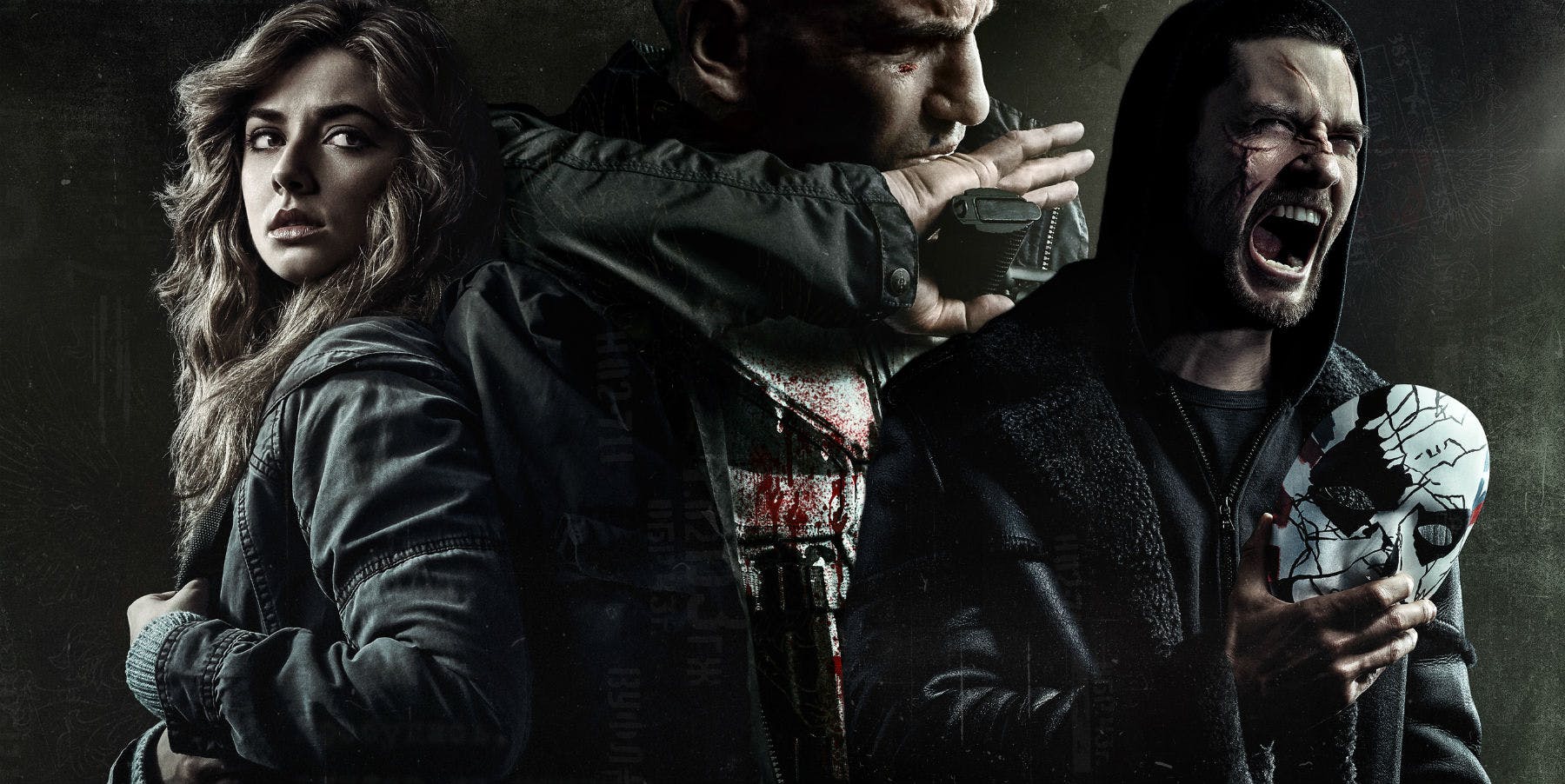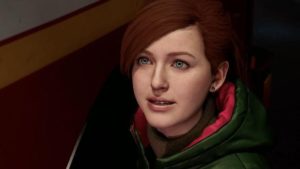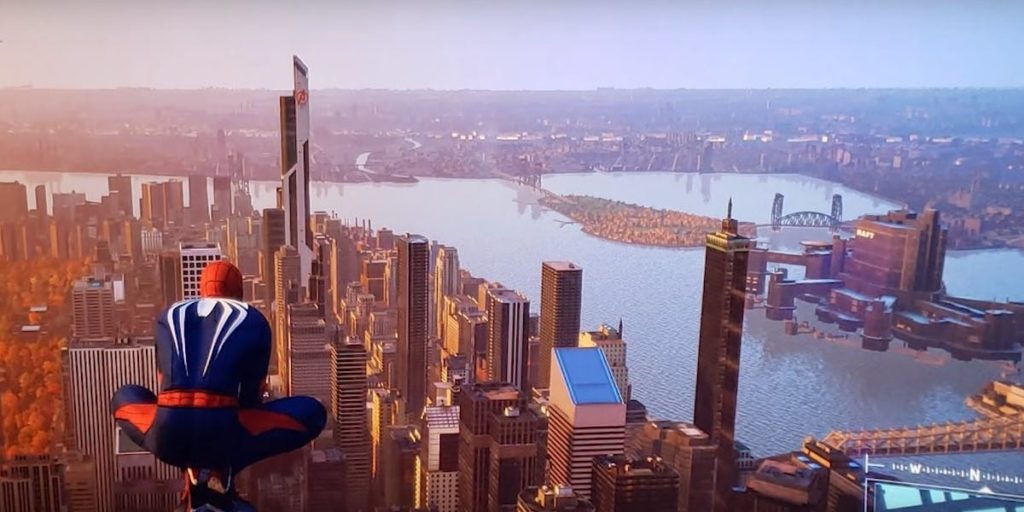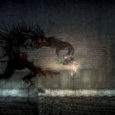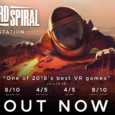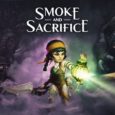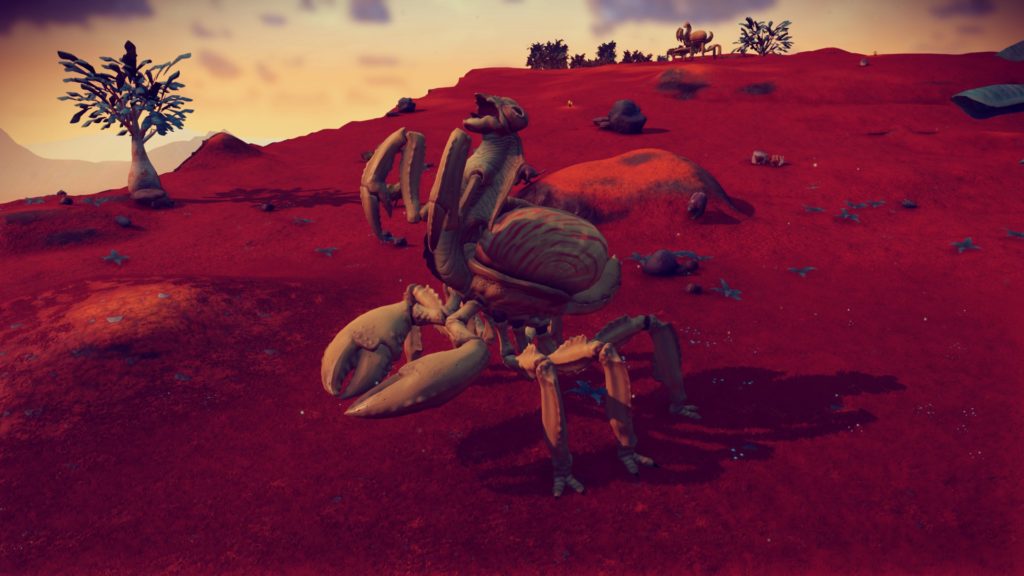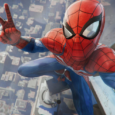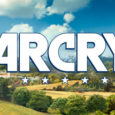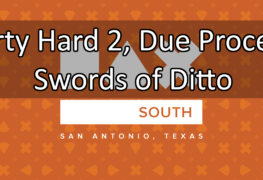Netflix’s Marvel series have all had their peaks and valleys, but nothing is more middle of the road than The Punisher. With all these titles seemingly being cancelled after their latest entries, the sands in the hour glass of our time with these characters is nigh. While The Punisher may never reach the lows of Iron Fist, it also never ascends to the highs of Daredevil, and the second entry into the series ends up being a mixed bag.
The Punisher Season 2 is much like the first season; yes, there is some good but it is balanced out with plenty of bad. While there is still much to enjoy, this 13 episode long series really only has about 6 episodes of interesting content. Why Netflix feels the need to elongate every one of their series and stretch things out to comical lengths is a bit strange. The moments that are good are great, wonderful even in some parts. But are these few moments worth all the fluff the viewer has to navigate through?
So what exactly is good, then? Well, there was enough material to keep me watching in about 2 or 3 sit downs… but in hindsight, I realize I did not have much else going on or things to get to. So, was the show keeping my interest, or was I just bored and willing to watch anything? It’s going to be a case by case basis with each viewer. The worth of the second season of The Punisher correlates to your investment in the ongoing (and soon to be closing) universe. However you end up feeling though, there is some great stuff here.
Jon Bernthal, and his portrayal of Frank Castle is tops. Jon embodies Frank in the same ways that Robert Downey Jr embodies Tony Stark. The casting is perfect here, and while that great casting does not extend to every character on the show., there are still some stand outs. Ben Barnes as Billy Russo/Jigsaw is also a great choice, and while his arc may be a bit too long in the tooth, its overall a good arc for a troubled villain. However, elements and reveals of his arc ground the high ambition concept of a villain going through memory loss and PTSD. Josh Stewart as John Pilgrim is outstanding as well. He is quite the presence but his story does not really take off until late in the series, and by then it can feel too late for some.
The action is also a stand out, there is way more hand to hand combat this time around, but that is not at the cost of some great gun focused scenes. The choreography is fantastic, and the visceral moments are some of the best stand out parts of the whole series. You get a good action scene at least once an episode, so it’s hard to feel like the action is pulled back or in reserves.
While the story can feel long, and some of the side arcs seem nonsensical, season two actually sticks the landing. It has a very satisfying ending and all of the lingering plot liens are tied up very nicely… almost as if they knew they were being cancelled. Many viewers will be happy to see a true and definitive ending to Frank Castle’s Netflix journey.
Sounds like plenty of positive to keep this moving forward, but there are still many criticisms to bring up.
Bringing back the homeland security officer, Dinah Madina, played by Amber Rose Revah, is within the top ten worst choices Marvel has made on any one of their properties. Why bring back this shallow, uninteresting, and logically dumb character? I have no answers for you, and neither does the show. There is, however, a new female character introduced this season, and The Punisher really stumbles as they fail to deliver on her personal arc or constructing an interesting character that elevates the ones around her.
The character in question, a therapist for Billy named Krista Dumont, played by Floriana Lima, whose sole purpose is to destroy the plots of other characters. At no point is Krista interesting or bring anything to the table, and it is hard to nail down this is solely due to a writing issue or an acting one. If I had to guess, it’s an issue with both. While she is not nails on a chalkboard bad in terms of acting, her scenes are not memorable and she does nothing to elevate the bad writing she is given. Hard to truly say who is at fault here.
Giorgia Whingham plays the young teen in distress that Frank saves. While she can act well, I found it hard to relate to her or her issues, however she was not near as annoying as I thought her character would be. This “badass-saves-the-little-girl” trope has been around forever, and in this it never reaches the highs of The Last of Us, or The Professional. Instead, her entire plot just treads water and never makes much progress, but hey she never truly gets in the way! There was so much more that could be done with her and her arc, and it’s like The Punisher just kind of gave up on expanding it.
The Punisher season two ends up being one of the worst representations of interesting female characters that Marvel has ever attempted. None of their arcs are realized, none realize their fullest potential, and none really offer anything to the most interesting parts of the plot, and that is a shame. Other Marvel entries don’t seem to suffer as badly from this, as Daredevil has Clair Temple and Karen Page, Luke Cage has Misty Knight, Iron Fist even has a great character in Jessica Henwick’s Colleen wing. The Punisher has… nobody. It is quite the shame.
There are other questionable casting decisions like Curtis Hoyle, played by Ebon Moss-Bachrach, is a mostly stellar character but sometimes becomes the role of Foggy to Frank. He acts like a moral compass despite his actions and support of Frank being to the contrary of this morality. In general, Curtis is an interesting character, but he ends up taking on a roll that is not exactly fit for the actions the script enlists him with.
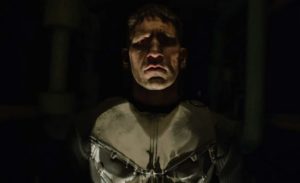 The Punisher Season 2 ends up being a hard one to recommend. I enjoyed most of my time with it, but I did feel like a hostage through most of its run time. I wanted to get to the good stuff, and knew the awesome things would rear their head…but I had to wade through a lot of bad to experience the small morsels of good. Despite the ongoing issues, I honestly think it is as good as the first season, but that is not really saying much as the first season was plagued with similar issues. This was its chance to go bigger, to go better, and instead the show just kinda showed up for its last lap before getting inevitably cancelled.
The Punisher Season 2 ends up being a hard one to recommend. I enjoyed most of my time with it, but I did feel like a hostage through most of its run time. I wanted to get to the good stuff, and knew the awesome things would rear their head…but I had to wade through a lot of bad to experience the small morsels of good. Despite the ongoing issues, I honestly think it is as good as the first season, but that is not really saying much as the first season was plagued with similar issues. This was its chance to go bigger, to go better, and instead the show just kinda showed up for its last lap before getting inevitably cancelled.
One thing is for sure through; Bernthal embodies the Punisher, and is absolutely outstanding in the roll. I just wish his supporting cast, and various arcs were more worthwhile then they ended up being, and because of these shortcomings the pace is where season two takes the biggest hit.
Go watch it if you are a completionist who wants to finish up everything Netflix Marvel has to offer, but skip it if you do not have a lot of free time to sit through hours upon hours of unrealized arcs, and narrative fluff.
Want more out from the underground?
The fastest way to hear more from us is to support our efforts by donating or get monthly perks by becoming a patron on Patreon!
Check out more of our reviews and let us know what you think on Facebook or Twitter @SubCultured! Don’t forget to join in the conversation on our Discord channel and let us know what you’d like to see next!
Got an idea for a future debate? Let us know what you want to hear by joining our Discord server!
Follow us on Facebook or tweet to us @SubCultured using the hashtag #MasterDebaters!
Spider-Man for the PlayStation 4 is one of the many games that have come out in the last few years that really validates your system purchase. This amazing game based off of many’s favorite Marvel super hero, is not only a system seller, but it may be one of the greatest superhero video games ever made; even rivaling the top dog, the Batman Arkham series. The Dark Knight got many things right with Arkham City, and Spider-Man took many pages out of the playbook of said series. While the ingredients will seem automatically familiar, the execution of these recognizable mechanics are masterfully implemented.
Spider-Man games have a polarizing legacy, and the quality of the games run the whole spectrum. With this entry we get one of the better experiences as Spider-Man that the gaming industry has ever had. Not only do we get incredible moments as the hero, but you will step into the shoes of costume-less Peter Parker, running his daily life, as well as Mary Jane, who is now a reporter for the Daily Bugle.
Being able to tell these more human sides of the story really build out the emotional narrative that is at play here. Make no mistake, this story goes to some heart pounding, and breaking, places. The narrative is elevated by interesting characters, some familiar, some entirely new.
The real stars are the incredible voice cast, Yuri Lowenthal as Peter Parker/Spider-Man, Laura Bailey as Mary Jane Watson, and Stephen Oyoung as Martin Li, to name a few. A story is only as interesting as its character, and characters are only as interesting as their voice actors. Take a breath of relief that Spider-Man is firing on all cylinders in these regards.
New York is always as big of a character as Spider-Man is, and this game delivers one of the best seemingly one to one creations of New York. Real and fictional locations alike are on full display here, with many of the fictional locations being some very awesome Easter Eggs. I don’t even want to spoil any of them here, besides the one we have seen in trailers, the Avenger’s Tower. The real magic is naturally finding out what’s hidden among the city, as I had plenty of moments where my fanboy jaw hit the floor when I found some greater Marvel Universe nods. There is a bigger world here just waiting to be explored in future sequels or spin offs. The possibilities of what could be are nearly endless. New York feels like a living breathing city, with plenty of NPC who love to walk up and interact with you. Giving pedestrians a high five and taking selfies with some fans never gets old, and it brings life to this open world map.
No open world game is equipped without side content and collectibles, and this is sadly where the game starts to show some of its shortcomings. There are 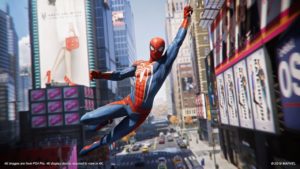 collectibles to acrue in the form of backpacks, which are very cool little tidbits of Peter’s past, and some excellent world building you can glean from the items. While those type are welcomed and don’t seem too intrusive, other collectibles are a bit of a grind, and come off as just fluff content. Collecting pigeons comes immediately to mind. While you get a good story with the quest giver, the act of collecting the birds themselves, leaves a lot to be desired.
collectibles to acrue in the form of backpacks, which are very cool little tidbits of Peter’s past, and some excellent world building you can glean from the items. While those type are welcomed and don’t seem too intrusive, other collectibles are a bit of a grind, and come off as just fluff content. Collecting pigeons comes immediately to mind. While you get a good story with the quest giver, the act of collecting the birds themselves, leaves a lot to be desired.
Side content also lacks variation. There are crimes to stop in each district of NYC, and while a cool concept in theory, there are only a few variations of these crimes. Ultimately you are just stopping a getaway vehicle, stopping a robbery, stopping a drug deal, or stopping a kidnapping. And every crime pretty much ends in fisticuffs. While these crimes lack variation, it is a minor complaint, as they are never boring to do because the mechanics are just so wonderfully executed.
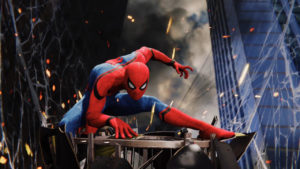 Speaking of mechanics, they are just about as perfect as can be. Swinging around New York has never felt better, and while it is easy to do, it take a bit of time to fully master. There are a lot of mechanics to be utilized while traversing the city, and as you gain locomotion through your countless moves and abilities you will find yourself swinging around at breakneck speeds. I have never felt more like Spider-Man in my life!
Speaking of mechanics, they are just about as perfect as can be. Swinging around New York has never felt better, and while it is easy to do, it take a bit of time to fully master. There are a lot of mechanics to be utilized while traversing the city, and as you gain locomotion through your countless moves and abilities you will find yourself swinging around at breakneck speeds. I have never felt more like Spider-Man in my life!
Our friendly neighborhood arachnid does hit the ground at some point though, and usually that means, hitting some bad guy face. Let me tell you all, hitting faces feels pretty damn good in this game.
So while we’re on the subject, let’s just address the elephant in the room. Spider-Man’s mechanics are heavily inspired (and heck, even borrowed) from the Arkham series. Some will think this is a rip off, but in reality, this is just a case of taking a great working combat system and retooling it for a new game. In Spider-Man, you are aiming to get your combo up as high as possible, why using reactive dodging in large crowds of bad guys. While multiplying your combo, you are filling up a focus meter which allows you to use instant take-downs. Also, the player can use a various amount of gadgets to crowd control the enemy. So yes, if this sounds like Shadow of Mordor or the Arkham games, you are right. But I have to point out that its this execution that makes the game so worthy. Though I concede to the point that others might feel like this is a reskin, I would encourage those who do to realize how perfect this combat system works for Spidey, and how it really nails his acrobatic nature and use of cool gadgets.
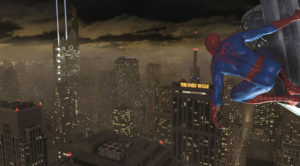 With such a cinematic story, you need a comparable cinematic score. The composer, John Paesano (known for his composition on the TV series Daredevil and The Defenders, and in video games with Detroit: Become Human and Mass Effect Andromeda) really nails all the right notes. He brings in so much immersion with his music, From the cheery tunes that play the moment you start swinging, to the more emotional moments that take place in cut-scenes, he really knows how to capture tone.
With such a cinematic story, you need a comparable cinematic score. The composer, John Paesano (known for his composition on the TV series Daredevil and The Defenders, and in video games with Detroit: Become Human and Mass Effect Andromeda) really nails all the right notes. He brings in so much immersion with his music, From the cheery tunes that play the moment you start swinging, to the more emotional moments that take place in cut-scenes, he really knows how to capture tone.
 Spider-Man on the PlayStation 4 looks great, but the real spectacle happen on the Pro. With great draw distances, crisp graphics, good looking character models, and a pretty consistent frame rate, it really makes for a beautiful experience.
Spider-Man on the PlayStation 4 looks great, but the real spectacle happen on the Pro. With great draw distances, crisp graphics, good looking character models, and a pretty consistent frame rate, it really makes for a beautiful experience.
Across my 30 hours of playtime, I only had 3 hard crashes which sent me to the blue error screen and ultimately back to my home PS4 screen. I also had one moment where my character fell through a building and I was stuck there until I reloaded a checkpoint. Listen, its an open world game. These types of things are going to happen in all of them, and while no one ever likes to see a game crash, I have played many monumental and titanic sized games that had much worse issues with performance. Some fare better than others and I would say Spider-Man is one of the better performing open world games at launch that I can think of in recent memories.
At this point, the PlayStation 4 is home to many must have exclusives, and you can add more more on the list…possibly near the top of the list, because this is one of the generation’s greats. After this year’s amazing God of War release, I was worried no other games would compare or even match up to it. Fortunately, Spider-Man maintains the quality of gaming that God of War showcased earlier this year, and while everyone has a personal favorite, I can see Spider-Man being a heavy contender for Game of the Year Awards.
Spider-Man is a must play experience, and with mechanics so tight, a story so unforgettable, and production so high quality, you would be doing yourself a serious disservice by skipping out. Did you enjoy Spider-Man? Notice anything we missed? Tell us about it on Twitter! Want more reviews out from the underground and into your feed? Find more at Sub Cultured!
It’s been a while since I’ve played No Man’s Sky and, to be fair, I thought I had completely written this game off entirely. When it first released in August of 2016, I fell deep into the hype trap, even shelling out the full $60 tag, something I am usually loath to do, and was subsequently burned. Once bitten, twice shy. After some more recent hype revolving around No Man’s Sky, though, this time with a $0 price tag since I’ve already bought into it, I decided to hop back in and check out what has really changed since launch. Find out what the ‘Next’ really means of the now titled ‘No Man’s Sky Next‘. Turns out, quite a bit has changed.
First of all, I find it weird that I’m using terminology and treating this game like it’s some sort of MMO, which now that there is some sort of real multiplayer going on I guess it is much closer to that. For all intents and purposes, though, No Man’s Sky Next still feels mostly single player. Which is fine by me. Usually, as a solo player, encountering other players in MMOs turns adversarial. We’re either fighting over the same drops, the same mobs, or fighting each other. That, as players, we’ve grown to consider this infighting ‘good, normal’ and ‘the way it should be’ is… odd. But I digress.
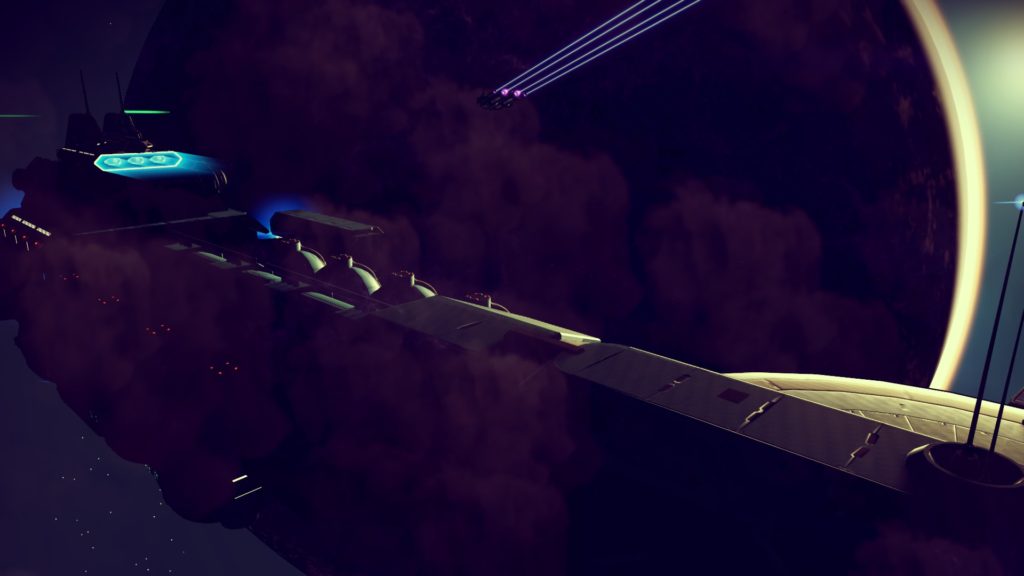
I delve back into No Man’s Sky Next after not touching it since release to see what has changed and if it’s worth playing again.
I remember when No Man’s Sky launched it felt like a wide ocean of content that was only a puddle deep. Everything was large and grand, but nothing felt important. There was no weight. Upgrades were acquired almost by accident and the primary focus was exploration… of similar, not-that-exciting locations. You could complete 99% of the game by just staying on the same planet you started on.
Now? Well, I’m not *entirely sold that No Man’s Sky Next is monumentally different, but it does feel a lot better. The focus has absolutely changed. Now, the focus is about building up your properties, your freighter fleet and your base, and completing the story missions. Your time spent on planets is transitory, hitting up only the points of interest you need to, and moving on. Which is good, because the less you see and pay attention to the procedural generation, the better. There was just not enough difference in the generation before. Now, it just feels… better. Planets feel more varied and look more populated. There’s more variety. I mean, there could always be even more variety in a game like this, but you don’t see the man-behind-the-curtain as much as you did two years ago.
Upgrades, too, seem to be made more from progress than from randomness, which is a much better feeling than just stumbling across the best weapon/ships in the game. That random big find is still included, too, though, but now instead of finding a big new ship, you now find a big *broken* ship that you need to spend a good chunk of time and resources fixing.
Again, it feels productive, not accidental. This is good.
Also, we need to talk about the screenshot capabilities. They are, hands down, the best screenshot options I have ever seen in any game. Period. And I consider myself a screenshot aficionado, so I don’t say this lightly.
At any time you can pause the game to take a screenshot. When you do, you can move the camera to any position around your character to take it, within a large distance. On top of that, if the lighting isn’t right, you can change the time of day and the position of the sun. You can add/remove clouds, change the depth of field, and even add an Instagram-like filter on top of all that. For real, all other games need to take a page from No Man’s Sky’s screenshot book. Screenshots are your players methods of advertising your game for you, and having a system like this only helps you.
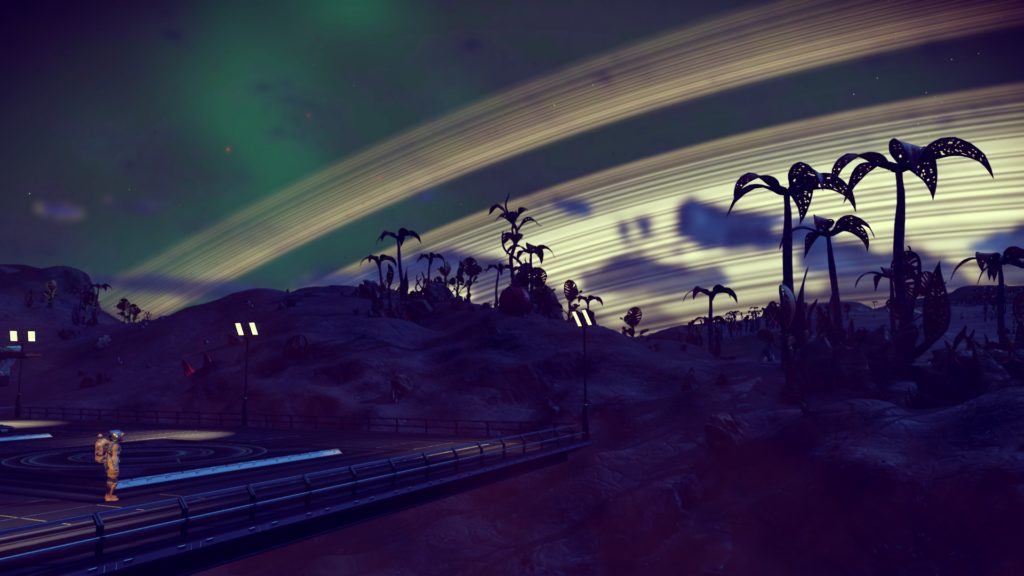
The Rings at Night! Glow Big and Bright! *clap clap clap clap* Deep In the Heart of… of… wherever this is.
So will I keep it up? No, of course not. I’m a rambling gamer and will pass quickly from game to game as my whim takes me. However, with No Man’s Sky Next focus having changed to one that feels purposeful instead of accidental, I’m a lot more apt to keep it going. Plus, the entire game fits into only a 10 GB footprint, which is efficient and impressive as anything.
It currently is still sitting at $60, though, which I wouldn’t say feels entirely worth it, but if it falls back down to $30, or even $40, I wouldn’t hesitate to suggest snapping it up. Have you hopped back into No Man’s Sky Next as well? Let us know on Twitter @SubCutured!
P.S. – If you’re looking for a good planet to settle down on, I highly suggest planet Ocho II in the Mucalls system. Red grass, bright sun, abundant resources, and a pleasant temperature all year long. Nice place to vacation. Just don’t murder me, okay?
Of the three games I’ve been given the opportunity to review in the past two weeks, Downward Spiral: Horus Station was last on the list for one very particular reason: Looks. But, as I’ve learned, beautiful games can be terrible (Star Wars: Battle Front, anyone?), and even the most coarse of games can be incredible. Despite my initial bias, I opened my mind, and my heart, to Downward Spiral: Horus Station.
From developer 3rd Eye Studios, Downward Spiral: Horus Station is an innovative and seamless VR experience.
Taking players through an abandoned vessel, the game focuses on visual storytelling for single player or two player online co-op. Using their wits, players will have to piece together the mystery based on observation and interaction all while accompanied by the electronic ambient soundtrack composed by platinum selling HIM frontman, Ville Valo.
For the first few hours with this game, my time was spent try to get the hang of the two separate game modes, as Downward Spiral: Horus Station plays in both a VR mode and Normal mode. It needs to be said again, that without a doubt, this game absolutely needs to be played in VR. The attention to detail in a deep space setting is entrancingly realistic, and just like movement in a zero gravity environment, the player is expected to grab handrails or shove yourself off walls to propel your body across a room.

On the opposite end, Normal mode makes the game almost impossible to play. Even after turning mouse sensitivity up to maximum, the look speed is too slow to react to threats, look around naturally, and the max is about 15 degrees a second. Though the slower movement speed makes sense in a interstellar environment, look, grab, look, shove shouldn’t take upwards of 10 seconds of play time.
Environmental and object interaction is equally innovative or utterly frustrating, depending on if you’re in VR or Normal modes, as the physics involved are the same. I noticed at times in Normal mode when entering a compartment of the station at a different orientation to the previous, there exists no mechanism to reorient yourself to that room, adding another layer of difficulty to movement, and the extra punch of disorientation.
As it turns out, the VR mode was my preference, as you can grab surfaces, reorient yourself, and launch off again in a matter of seconds. It forces gameplay at a slow and methodical pace through levels that adds tension and gives a sense of pride as you progressively learn how to best manipulate your momentum in each confined space.
The soundtrack by Ville Valo utilizes an 80’s sci-fi ambiance that swells and adds a consuming intensity at appropriate moments to your surroundings. With an unexpected direction to the sound design and silent narration, the enthralling aspect of Downward Spiral: Horus Station is in the feelings of anxiety and apprehension as you navigate your surroundings in deep space.
Though Downward Spiral: Horus Station can at times have no clear sense of direction of plot or story past going forward and figuring things out for yourself, and even then generally by accident, the sense of urgency in VR mode of Downward Spiral: Horus Station is immersive and entrancing. Downward Spiral: Horus Station was made for VR, or rather, VR was made for this game.
Don’t be fooled by the whimsically beautiful, hand-drawn aesthetic Smoke and Sacrifice. Set underground and spanning multiple biomes, Smoke and Sacrifice is a wonderfully crafted survival adventure with an engaging story and an infuriatingly steep learning curve. This game goes from cutesy and innocuous to immediate psychic scarring in the span of its own intro scene. How is that even possible? Might have something to do with the player taking an active role in sacrificing the main character Sachi’s first born child upon an altar surrounded by sun-worshiping religious acolytes. Maybe.
The only reason I decided to play this game, out of a choice of several others, was purely visual. So, being the habitual lazy mug I am, instead of doing research along the lines of watching the entire YouTube video, reading about Solar Sail Games, or, you know, doing literally anything at all before just jumping into this, I… just jumped into this.
And once you jump in, the real nightmare begins. Flash forward seven years; the lights go out, the smoke pours in, and the monsters come into the village. Taking control of Sachi, the player will use the ensuing chaos, wrapped in a thick blanket of panic, to check out the temple and alter where Sachi gave up her child, only to be teleported to a hellish landscape of terror and smoke shrouded danger.
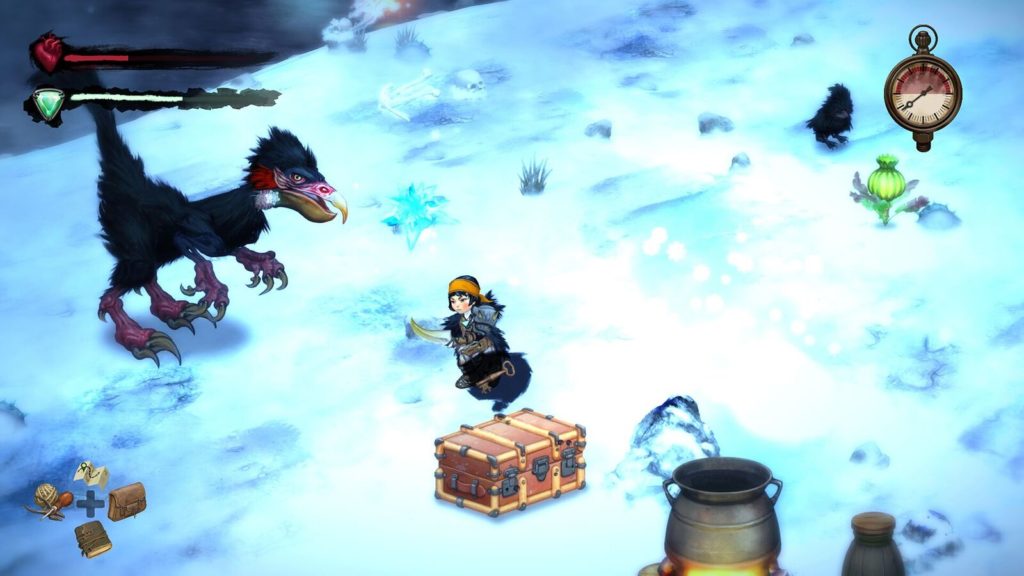
Look, I’ll be the first to admit that I’m not the brightest lighthouse on the coast, and I generally like my games fast and simple. But, had I taken the time from the outset to pay attention to the background environment, I probably wouldn’t have died 20 something times before making any significant progress in my first play-through.
Without the player ever being involved, the ecosystem of this world carries on with it’s bad self. Polyps (little jellyfish enemies) mate and produce offspring, plants swallow glowbugs and emit protective light, anglermoles eat fireflies and belch flames at you. Why does any of this matter?
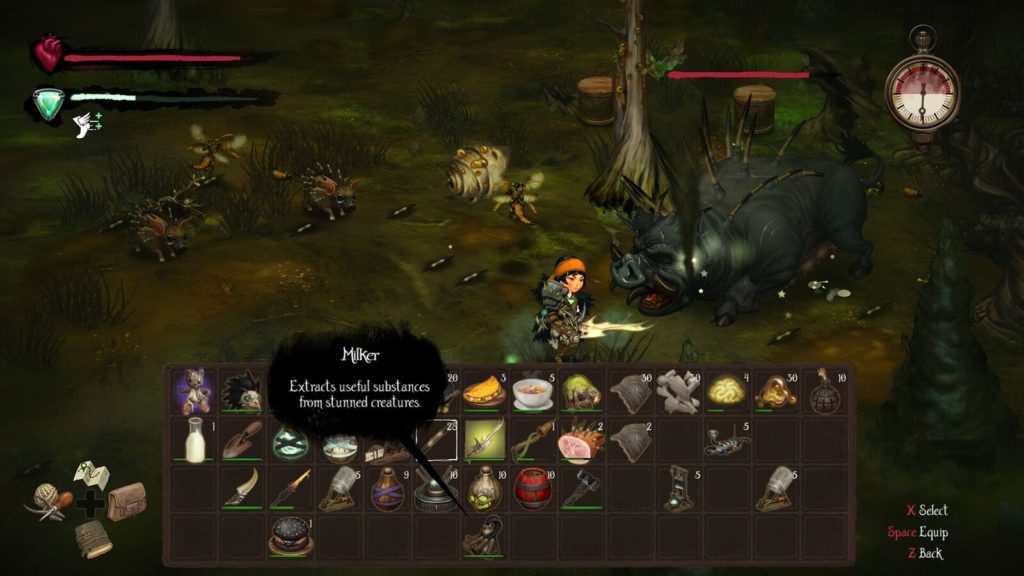
Actual transcript of this fight: F***. This game is hard… No wait, I got it… Nevermind, I’m dead again.
See that monstrosity in the picture up there? That was the first big enemy I was tasked to kill. And how many times did he annihilate me instead? An embarrassing amount. It wasn’t until I accidentally brought him too close to that wasp nest that the coin finally dropped. The wasps killed the boar, I killed the wasps, and I then applied that lesson to every other big-bad in the game. Paying attention to the environmental interactions are the key from taking Smoke and Sacrifice from impossibly frustrating to an enjoyable experience.
Even the sound design is amazing. Flapping insect wings, gnashing teeth, screen rumbling explosions, and prosaic music all contribute to a perfect symphony to accompany you on your quest.
Of course, no game is without its flaws. However, in this particular case, for Smoke and Sacrifice they are few and far between. Sometimes items you try to pick up are inaccessible because of the placement of permanent objects and how items drop. Also there’s… um… well, actually, that’s about the only bug I found. Other than the wasps.
Fans of diesel-punk, the crafting elements of Ark, and games like Penny Arcade’s On the Rain Slick Precipice of Darkness should definitely give this one a go. From perfect visuals and incredible audio, not a tedious amount of grinding, Smoke and Shadow is a visually perfect game with incredible audio and a plot that gave me actual nightmares. I cannot wait to play more.
PS: SAVE.
PPS: SAVE OFTEN.
Editor’s Note: This review was written in conjunction with Jon Calise, a contributor to Sub Cultured. You can find more of his writing on his personal blog, Petting Zoo Rejects.
For fans of Portal that want a more serious plot, Q.U.B.E. 2 is the sequel to the hit first-person puzzle game Q.U.B.E. from Toxic Games, an award-winning, independent game development studio based in the U.K. which specializes in brain-twisting, first-person puzzle games.
Q.U.B.E. 2 immediately introduces the player to Amelia, a British archaeologist who has just woken up on an alien planet with a bad memory and special gloves. Ameila, with the help of fellow survivor, Emma, must face the challenging puzzles of the Q.U.B.E. in order to try and find a way back home
The innovative mechanics of Q.U.B.E. 2 is where the game truly shines.Taking control of Amelia, the player will utilize her gloves to create different colored cubes in order to solve the various puzzles throughout the game and escape this strange, alien world. A blue cube creates a surface that propels anything to come in contact with it in the direction that the square is facing. Green creates a cube that is primarily used in conjunction with the other squares and environmental objects, while orange manipulates a rectangular cube that can be used to reach higher areas, as a surface for green cubes to rest on, or to move.
Once the player has the basics down, the mellow atmosphere of Q.U.B.E. 2 keeps the player involved and introduces new mechanics at at a steady pace. Gameplay can be slow at times, which is part and parcel for puzzle-based games, but Q.U.B.E. 2 provides enough deviation in the mechanics to keep the progression fresh.
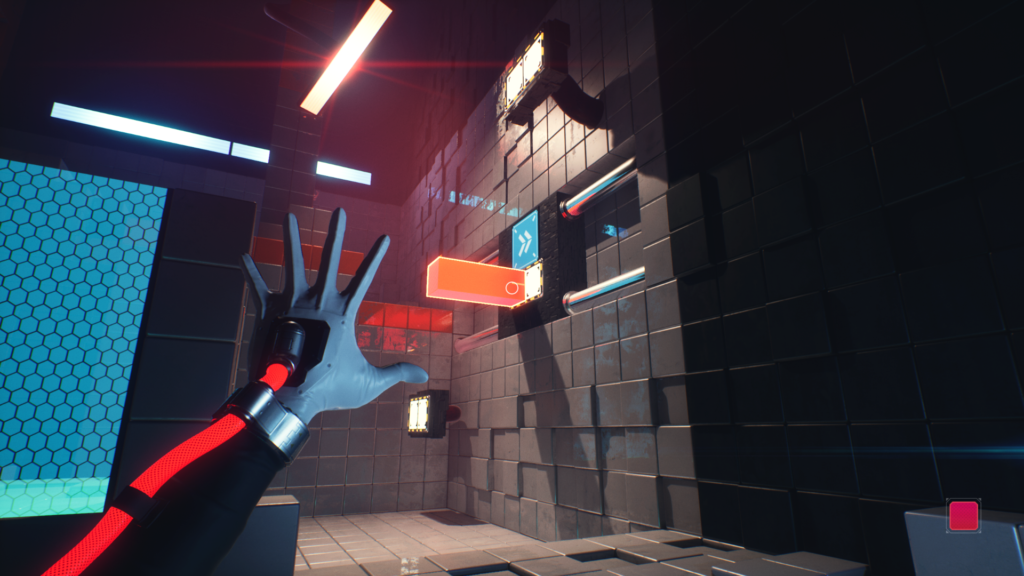
Accompanied by subtle, atmospheric music that gradually swells when appropriate, the sense of locomotion in Q.U.B.E. 2, whether launching through the air as a part of a puzzle or plummeting off a high platform with no consequences, leaves the player enraptured and prompted many accidental exclamations of delight during my time with the game. While the ambient music is not present at all times throughout Q.U.B.E. 2, this adds to the sense of urgency, which is fitting for a puzzle game of this nature. The characters in Q.U.B.E 2 are believable and easy to empathize with, thanks in part to the realistic voice acting. Amelia in particular has personal connections outside of her current predicament which gives the player motivation to get her out of her dire situation.
Good news! There is little to no learning curve if you’re old hat with puzzle games. Q.U.B.E 2 employs good use of pacing and gets the player accustomed to solving puzzles early on with ease. Which isn’t to say that the entire game is a no-brainer! Puzzles in Q.U.B.E. 2 require some serious outside-the-box style thinking, but never become controller shatter frustrating.
The attention to detail is extremely prevalent in Q.U.B.E. 2, particularly in the building of the intricate cube formations that are littered throughout the game. Q.U.B.E. 2 employs beautiful graphics and runs smoothly with no significant frame rate drops, and a great use of color palette, starting with more neutral colors and proceeding to lush, natural colors as you progress deeper through areas. Mesmerizing geometric formations can be found throughout and fit well within the theme of Q.U.B.E. 2.
Where other games can be too in your face about the theme of extraterrestrial involvement, the plot of Q.U.B.E. 2 leaves the player with a sense of intrigue.The smooth execution of this normally campy plot device urges the player to continue pressing forward to unravel the mystery behind why the structures were built and how Amelia fit into the overall story.
Editor’s Note: This review was written in conjunction with Bernard “Beano” Huang, a contributor to Sub Cultured. Catch him on “The Bean Stream” every Wednesday and Thursday night at 9PM CST on Sub Cultured’s Twitch channel!


